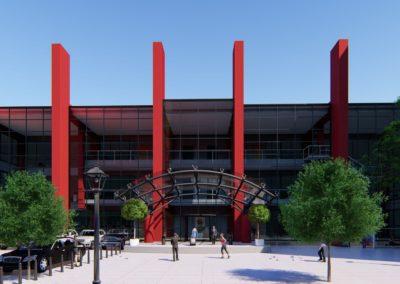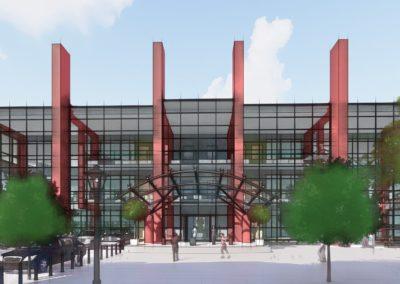Architectural Rendering Styles for Distinctive Presentations
Architectural visualization isn’t just about accuracy; it’s about conveying the emotion and essence of a design. The visual style you choose can make all the difference in how your project is perceived, whether you’re aiming for a bold, conceptual approach or a softer, more refined presentation. At J. Scott Smith Visuals, we offer a variety of architectural rendering styles that bring a unique touch to every project, helping architects and developers communicate their vision in the most compelling way possible.
Sketchy Line Style
The sketchy line style is ideal for projects in the early design phase, where the goal is to present a concept in a loose, creative manner. This style emphasizes hand-drawn lines and rough edges, giving the rendering a freeform and unfinished look, much like a preliminary sketch. It’s perfect for fostering dialogue and creativity, allowing both clients and designers to explore the possibilities of a project without getting bogged down in the finer details. The sketchy line style adds an artistic flair that communicates flexibility, inviting collaboration and iterative development.
Watercolor Style
For a softer, more artistic touch, the watercolor style brings a dreamlike quality to your designs. Using soft colors and blended edges, this style mimics the delicate washes of traditional watercolor paintings. It works beautifully for residential projects, park designs, or any project where you want to evoke a warm, welcoming atmosphere. The watercolor style softens the technical aspects of architectural renderings, making the designs feel more approachable and visually appealing. This can be particularly effective in early marketing presentations where you want to inspire emotion and excitement about the project’s potential.
Hybrid Style
Sometimes, the best presentations blend multiple architectural rendering styles to create a balanced visual approach. Our hybrid style combines the precision of photorealistic elements with the artistic touch of sketch or watercolor techniques. This approach allows you to highlight the key details of a project—such as materials and lighting—while maintaining an overall artistic presentation. The hybrid style is versatile and can be tailored to suit different phases of a project, from concept development to final presentations. It offers the best of both worlds, providing enough realism to convince, while maintaining an artistic and engaging look.
Marker Style
The marker style evokes the appearance of traditional architectural marker renderings, using bold strokes and vibrant colors to highlight key design features. This style is particularly useful for urban designs or projects where clarity and emphasis are critical. By focusing on the project’s most important elements, such as structural outlines and major design components, the marker style delivers a clean, impactful visual that draws attention to the core of the design. It’s a bold and effective way to communicate large-scale ideas without overwhelming the viewer with unnecessary detail.
Photorealistic Style
While artistic architectural rendering styles have their place, sometimes a project calls for a high level of realism. Our photorealistic style presents designs with incredible detail and precision, allowing clients to experience a space as it will appear once constructed. This style is best suited for final presentations, where the goal is to showcase the exact materials, lighting, and textures of the project. By offering a near-exact representation of the finished product, photorealistic renderings help to eliminate guesswork and give clients the confidence to move forward with their decisions. This is the style in which we do most of our work. You can find examples of photorealistic renderings in our architectural rendering portfolio.
Minimalist Style
The minimalist style strips down the visual elements to their bare essentials, focusing on clean lines and simple forms. This approach is perfect for projects where the emphasis is on structural design or spatial arrangement rather than intricate detail. It allows architects and developers to communicate the foundational elements of a design without overwhelming the viewer with color or texture. Minimalist renderings are often used for modernist or contemporary projects, where simplicity and elegance are key.
Why Visual Style Matters
The visual style you choose can transform the way your project is understood and received. A well-chosen style enhances communication, fosters collaboration, and helps your audience engage with your design in a meaningful way. Whether you want to spark creativity in the early stages of design or deliver a polished, high-impact presentation, we offer a range of architectural rendering styles to meet your needs. Our team works closely with you to select the right approach for your project, ensuring that your vision is conveyed with clarity, creativity, and impact.
Related: Our post on Rendering Techniques shows other ways we can balance your visual needs with your budget.








0 Comments